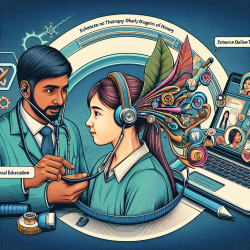For practitioners working with minimally verbal children with autism spectrum disorder (ASD), finding effective interventions to facilitate spoken language development is crucial. Recent research highlights the promising potential of Auditory-Motor Mapping Training (AMMT), an intonation-based therapy designed specifically to enhance speech output in these children.
Understanding AMMT
AMMT involves the intonation of two-syllable target words or phrases while simultaneously tapping on electronic drums tuned to the same pitches. This method co-activates shared auditory and motor representations, effectively engaging both manual and vocal actions. The therapy draws on the developmental relationship between manual and vocal motor actions, leveraging music-supported activities to facilitate spoken language development.
Key Findings from Recent Research
- Improvement in Speech Production: After 25 sessions of AMMT, participants showed significant improvements in syllables approximated, consonants correct, and vowels correct compared to baseline measures.
- Comparison with Control Treatment: When compared to Speech Repetition Therapy (SRT), a control treatment lacking intonation, AMMT participants demonstrated greater improvements in speech production metrics.
- Correlates of Improvement: The ability to imitate phonemes before treatment was significantly correlated with the amount of improvement observed after 25 sessions.
Clinical Implications
The results suggest that intonation-based therapies like AMMT can be highly effective in improving spoken language abilities in minimally verbal children with ASD. Practitioners should consider incorporating musical elements into therapy sessions to enhance motivation and engagement. Additionally, assessing a child's ability to imitate phonemes may help predict their responsiveness to AMMT.
Encouraging Further Research
The success of AMMT in this study underscores the need for further research into intonation-based therapies. Practitioners are encouraged to explore additional studies and consider participating in ongoing research efforts to refine and expand these therapeutic approaches.
To read the original research paper, please follow this link: Auditory-Motor Mapping Training: Comparing the Effects of a Novel Speech Treatment to a Control Treatment for Minimally Verbal Children with Autism.










